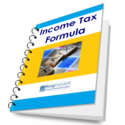Do you get calls from telemarketers, offering you pre-approved credit cards? Aren’t you bombarded with many credit card offers?
Not familiar with credit cards, and want to know how they work? Want to understand the various terms used while dealing with credit cards? Read on.
Credit cards have lately gained a lot of popularity in India. Many people sport not one, but many credit cards.
But do you know how credit cards operate? What do terms like “credit limit” or “roll-over” mean?
Credit card spend is a loan
When you pay using a credit card, the money doesn’t get deducted from your bank account. Then, where does it come from?
When your credit card transaction is authorized, your bank (the card issuing company) pays the amount to the seller of the product / service on your behalf.
Thus, the money that you spend through the card is a loan given to you by your bank.
Credit Limit
That’s right.
When you apply for the credit card, the bank assesses you income and your other liabilities, and accordingly, fixes a credit limit for your card. This credit limit is the maximum you can spend using the card. In other words, it is the maximum amount that the bank is willing to lend you at a time.
This credit limit works like a line of credit – it is the amount that the bank pre-approves you to borrow from it. You borrow as and when you need the money (you borrow every time you make a purchase), and this limit gets depleted by the amount you spend.
Whenever you make a payment to the bank, this limit is restored by the amount paid by you.
Monthly Statement
At the end of each cycle (each cycle is usually 1 month long), you get a statement from your bank stating the details of the transactions conducted by you during the month. The statement also shows your credit limit, and the amount used up by you. It also mentions the amount remaining.
Total Amount Due
The amount used by you during that cycle, plus any amount remaining to be paid from the previous cycle and interest due, is called the Total Amount Due. This is the total amount that you owe the bank.
It is also called total outstanding amount.
Minimum Amount Due
So, do you need to pay this “Total Amount Due” to the bank immediately?
Ideally, you should. (More on it in another article).
But you can choose to pay less than that – and this amount is also mentioned on your monthly statement as Minimum Amount Due.
This amount is calculated by the bank every statement cycle. It is usually 5% to 10% of the amount you have spent in that cycle (the exact % varies by the bank).
The “Minimum Amount Due” is the minimum amount that you are required to pay by the due date.
Roll-over of credit
So, what happens to the amount that you do not pay? You postpone payment of this remaining amount till your next statement – this amount gets added to your statement for the next month. This is called Roll-over of credit.
When you pay up the full amount on time, you use the credit facility of the bank for 1 statement period. But when you just pay the minimum amount due and roll-over the balance, you are extending the credit facility offered to you by the bank.
Interest Charges
The bank charges you an interest for this rolled over amount – the interest rate charged varies from card to card, and from bank to bank.
But as a general rule, this rate of interest rate is quite high – it can range from 24% to 42% per year. Banks and credit card companies often express this interest on a per-month basis – thus, the interest rate might be expressed as 2.5% or 3% per month.
The interest is charged on all outstanding amounts – thus, it is charged on any amount that you roll over for a given period, plus any rolled-over amount from the previous periods, plus the amount spent in the current statement period.
If you do not want to pay any interest, you have to pay the “total outstanding amount” or the “total amount due” in full.
Due Date
The due date is the date by which you are required to pay the Minimum Amount Due. This due date is usually 18 to 21 days after your statement date.
Grace Period
This extra period of 18 to 21 days following the end of a statement cycle – from the last date of a statement cycle to the due date – is known as Grace Period.
Remember, the bank charges you interest only if you don’t pay up the full amount by the due date. This means that effectively, you can enjoy an interest-free credit not for 30 days (which is the statement period), but for upto 51 days!
Example
Let’s understand this using an example.
Let’s say your statement period is from 1st of every month to the last day of the month. You make a purchase on 1st March. This statement period ends on 31st March. You would get the statement for this cycle on or around 5th April, and the due date would be around 20th April.
So, for an item purchased on 1st March, you can make the payment on 20th April without paying any interest!
To learn about things like class of the credit card (Silver / Gold / Platinum), annual charges, reward programs, co-branded cards, balance transfer, etc., please come back to read “Credit Cards – Beyond the Basics”.
To learn how credit cards should be used by financially prudent people, please read “How to use a credit card – the financially prudent way”.





